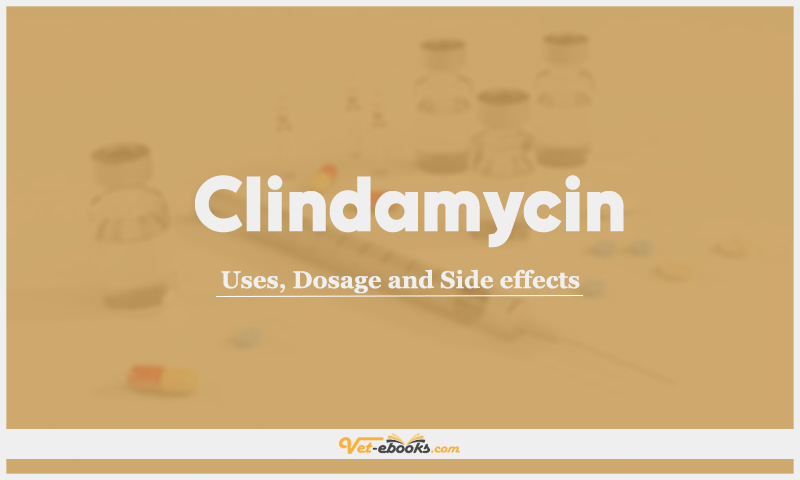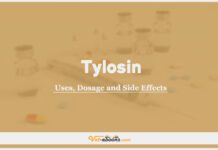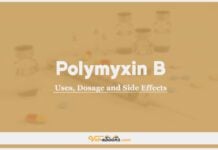Clindamycin: Uses, Dosage and Side Effects

Overview
Time-dependent lincosamide antibiotic that binds to the 50S ribosomal subunit, inhibiting peptide bond formation.
Uses of Clindamycin
- Bone and joint infections associated with Gram-positive bacteria.
- pyoderma.
- toxoplasmosis.
- Infections associated with the oral cavity.
- It is also recommended as part of the treatment for sepsis/bacteremia and hospital-acquired pneumonia.
- Active against Gram-positive cocci (including penicillin-resistant staphylococci),
many obligate anaerobes, mycoplasma, and protozoal infections (Neospora caninum, Toxoplasma gondii).
Dose of Clindamycin in Dogs and Cats
Dogs:
- 5.5 mg/kg p.o. q12h or 11 mg/kg q24h; in severe infection can increase to 11 mg/kg q12h.
- Toxoplasmosis/neosporosis: 25 mg/kg p.o. daily in divided
doses.
Cats:
- 5.5 mg/kg p.o. q12h or 11 mg/kg q24h.
- Toxoplasmosis: 25 mg/kg p.o. daily in divided doses; increased doses of 30–50 mg/kg p.o. daily have been recommended for CNS involvement.
Drug Dosage Calculator
You Should Give:
Side Effects of Clindamycin in Dogs and Cats
- Colitis, vomiting, and diarrhea are reported.
- In cats may be associated with oesophagitis and oesophageal stricture; therefore, consider following solid dosage forms such as tablet administration with a little water or food bolus.
Contraindications of Clindamycin in Dogs and Cats
- No information is available.
Some Notes:
- Attains high concentrations in bone and bile.
- Being a weak base, it becomes ion-trapped (and therefore concentrated) in fluids that are more acidic than plasma, such as prostatic fluid, milk and intracellular fluid.
- There is complete cross-resistance between lincomycin and clindamycin, and partial cross-resistance with erythromycin.
- Use with care in individuals with hepatic or renal impairment.
- May enhance the effect of non-depolarizing muscle relaxants, (e.g. tubocurarine) and may antagonize the effects of neostigmine and pyridostigmine.
- Do not administer with macrolide, chloramphenicol or other lincosamide antimicrobials as these combinations are antagonistic.
Tip
Do You Want To Increase Your Veterinary Knowledge and Practical Skills?
You Can Now Browse and Download +3000 Books For Veterinary Professionals & Students Online.
Download Veterinary Books




















